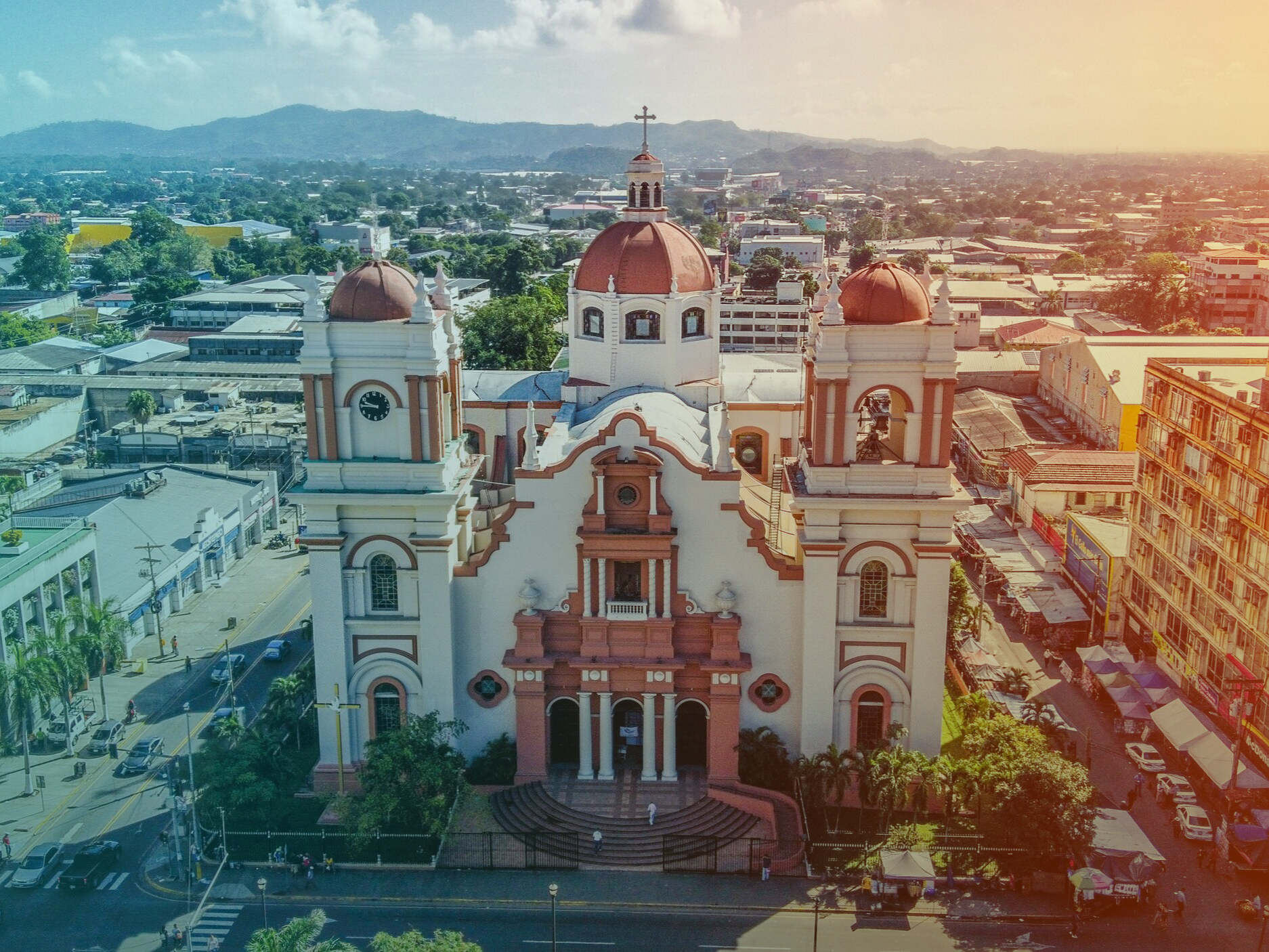Honduras.
The Republic of Honduras sits on a land area of 43,278 square miles, and it is located in Central America. Honduras has a long coastline along the Caribbean Sea. This geographical region is known as the Gulf of Honduras while the body of water on the Pacific coast is known as the Gulf of Fonseca. Nicaragua borders Honduras on its southeast border and Honduras borders El Salvador on its southwest. The Western border is shared with Guatemala.

Honduras.
The Real Banana Republic.
Banana Republic.
Honduras became known as the Banana Republic in 1904 when it became heavily invested in the production of Bananas through companies like the United Fruit Company and Cuyamel Fruit Company. All through the 20th Century, labor forces from all over the world migrated to Honduras to work in its Banana Plantations.
Demographic.
Undoubtedly, you'll get the most out of Honduras if you first learn more about its government, its economy, it’s culture, and it’s history. There are an estimated 8 million residents of Honduras. The entire country is about the size of the State of Virginia. Honduras has a variety of ecosystems and terrains which is a rare thing for a country this size.
Culture.
Honduras is rich in its heritage, natural beauty, and has an exiting culture. It is recommended that prospective Expats get a deeper understanding of Honduras ahead of deciding to move to Roatan. Life on Roatan is much different than life on the mainland of Honduras. But Honduras authority is still the law of the land. We hope you enjoy this brief overview of Honduras.
History of Honduras
The mainland of Honduras has long been inhabited by a variety of cultural groups. Among these are the Lenca, the Paya, and the better known Mayan. Honduras is home to one of the Mayan largest ruins. Paya Indians have been traced to Roatan. Today, the Latino ("mestizo") is the largest cultural group. On Roatan, the Paya Indians gave way to the Garifuna through a series of British and Spanish voyages. Christopher Columbus first came to Honduras in 1502, on his final voyage.
Hernan Cortes came to Honduras in 1524 and brought with him Spanish armed forces. This brought about a period of Spanish colonization that went on for nearly 300 years. In 1821, Honduras claimed its independence from Spain and became a Republic in 1838.
Temperatures
Average temperatures on Roatan hover around 80 degrees Fahrenheit. But the temperatures on the mainland are more varied. The mountain tops can see temperatures in the low 50s while the temperatures in the valleys can reach over 100F during the summer days.

World-Class
Coffee
Producer.
Political System.
The Republic of Honduras has adopted a democratic economic system based on free capitalistic trade. However, rumors of corruptions and a new wave of socialistic tendencies have surfaced. The most recent elections saw a surprising number of voters pushing for a socialistic agenda. That said, it is not the first time politicians have angled to turn the Honduran political system into socialism. So far, Hondurans have managed to promote and maintain a democratic system.
Government & Economy.
Like in the US, the Honduran government has the same three governmental branches (Executive, Legislative, & Judicial) but instead of two or three political parties, Honduras has five competing political parties. Two of these parties have been in office for much the countries recent history. Elections are held every four years in Honduras. In 2017, a sitting president won re-election for the first time. This caused turmoil on the streets as many claimed the re-election was not only illegal but also unconstitutional. By contrast, many are of the opinion, that reflection is needed to enable government continuance and to keep the more socialistic party out of public office.
The Honduran economy is mainly dependent on Agriculture, farming, textile productions, and tourism. Crops include coffee, sugar, and bananas. During the 1990's, the manufacturing industry grew exponentially. Textile factories grew in numbers primarily in the areas around San Pedro Sula. Honduras is a large exporter of sweatshirts, sneakers, and other garments consumed in the US and around the world. The "Made in Honduras" has become a common tag in clothing stores around the globe.
Honduran Culture.
An estimated 90% of Hondurans are mestizo. This group is a mix of European and American Indians. Hondurans speak Spanish as their first language. Spanish, Miskito, Garifuna, and the Bay Island Creole English are official languages to Honduras. But Spanish is by in large most commonly spoken of the languages. Street signs, official documents, and the press is all written in Spanish.
Religion.
Until the early 90's, most Hondurans identified as Roman Catholic. Today, there is a fairly even divide between Catholics and those practicing a Protestant faith.
Catrachos.
The citizens of every country have a nickname. Americans are commonly referred to as "Gringos." Hondurans are commonly referred to as "Catrachos." The name comes from General Florencio Xatruch. Those who supported the general were known as "Xatruchos" which later evolved to the more common spelling of "Catrucho" and later "Catracho." Using the word, Catracho is seen as a compliment and not a derogatory name. Honduras is like most other countries in that soccer of "futbol" is the most popular sport and a national pass time. It is customary for locals to wear their favorite futbol jersey around as casual attire. The most common jersey is that of the Honduran national team followed by jerseys from La Liga which include Real Madrid and Barcelona teams.

Catracho.
Runs in our blood.
Cities & Landmarks.
Tegucigalpa
San Pedro Sula
La Ceiba
Copan
Tegucigalpa.
The capital of Honduras is the city of Tegucigalpa. The word is pronounced "Tay-Goose-See-Gal-Pa." Tegucigalpa or "Tegus" is densely populated. The city is the political capital, and much of the official administrative and official work takes place in Tegus. The capital sits in a small valley, and its communities have grown up to include the base of many of the surrounding mountains. In years past, flying into Tegus was a nerve-racking experience. However, since the runway expansion, the airport landing has become safer. There is still a technical maneuver which pilots have to make which includes landing the aircraft shortly after coming out of a circular approach, but pilots flying into Tegus have the maneuver mastered, and the airport maintains a safe record since its expansion.
There are an estimated 25 embassies Tegus. There are also 16 consulates. Foreigners seeking permanent residence in Honduras, or locals looking for a visa to travel abroad all must go to Tegucigalpa to process their paperwork. Tegus and other nearby villages have a clear colonial architecture in its oldest neighborhoods. There are a few cobble stone roads, churches, museums, and parks which still carry an old Spanish charm.
San Pedro Sula.
San Pedro Sula ("San Pedro") is arguably the county's industrial capital. San Pedro is the second largest city in Honduras. The city gets its name from the Sula Valley, or "El Valle de Sula." San Pedro is also home to a popular international airport (SAP) which is often the airport of choice for backpackers or travelers looking to make a pit stop on the mainland of Honduras in route to the Bay Islands. Residency renewals can be done in San Pedro which makes for a shorter commute from the islands.
San Pedro is a busy industrial and commercial center. Unlike Tegucigalpa, San Pedro was a well-thought-out urban development. The city layouts out nicely with parallel and perpendicular roads. The city also has two concentric boulevards which make getting around town easier. Traffic is also less congested than in Tegus. The roads in San Pedro are orderly and arranged by streets and avenues. Much of what is not readily available on Roatan can be easily found in San Pedro.
La Ceiba.
La Ceiba or "Ceiba" for short is the fourth largest city in Honduras. Many travelers to the Bay Islands get there via a ferry from the mainland. That ferry departs out of La Ceiba which is about 3 hours from San Pedro Sula. La Ceiba sits on the Caribbean coast, and it has a fantastic shoreline as the coast is met by large mountains which oversee the La Ceiba. La Ceiba does have an international airport (LCE), but it is less popular than the airports out of San Pedro and Tegus. The short ferry ride from La Ceiba to Coxen Hole Roatan and also to Utila (aboard the Utila Dream Ferry). There is a ferry which runs from La Ceiba to Roatan. This ferry runs twice each day. There are also transfers from Roatan to the other two islands, daily.
La Ceiba offers added options for medical care, shopping, and touristic activity. Pico Bonito National Park is arguably the most popular attraction and the highest peak in Honduras. The base of the mountain ridge makes for a great location to experience zip line tours as well as whitewater rafting.
Copan.
The department of Copan is a popular Honduran destination as it is home to the Copan Ruins. These ruins are an ancient Mayan ruin which is rich in its history. The UNESCO has recognized the Mayan Ruins as a World Heritage site. The Copan ruins are a "must stop" location for visitors traveling through Central America. The Copan Ruins are also a popular weekend destination for locals and for visitors from Roatan who might be visiting the mainland for a short period. The downtown area of Copan is colonial. It is rich in its history and very charming. There are many small boutique hotels in the area as the tourist from all over come to visit the area. The temperature in Copan is lower than that of Roatan or other areas in Honduras. They average 68F/20C. Keep the weather in Copan in mind as you plan your weekend getaway.

Honduras.





